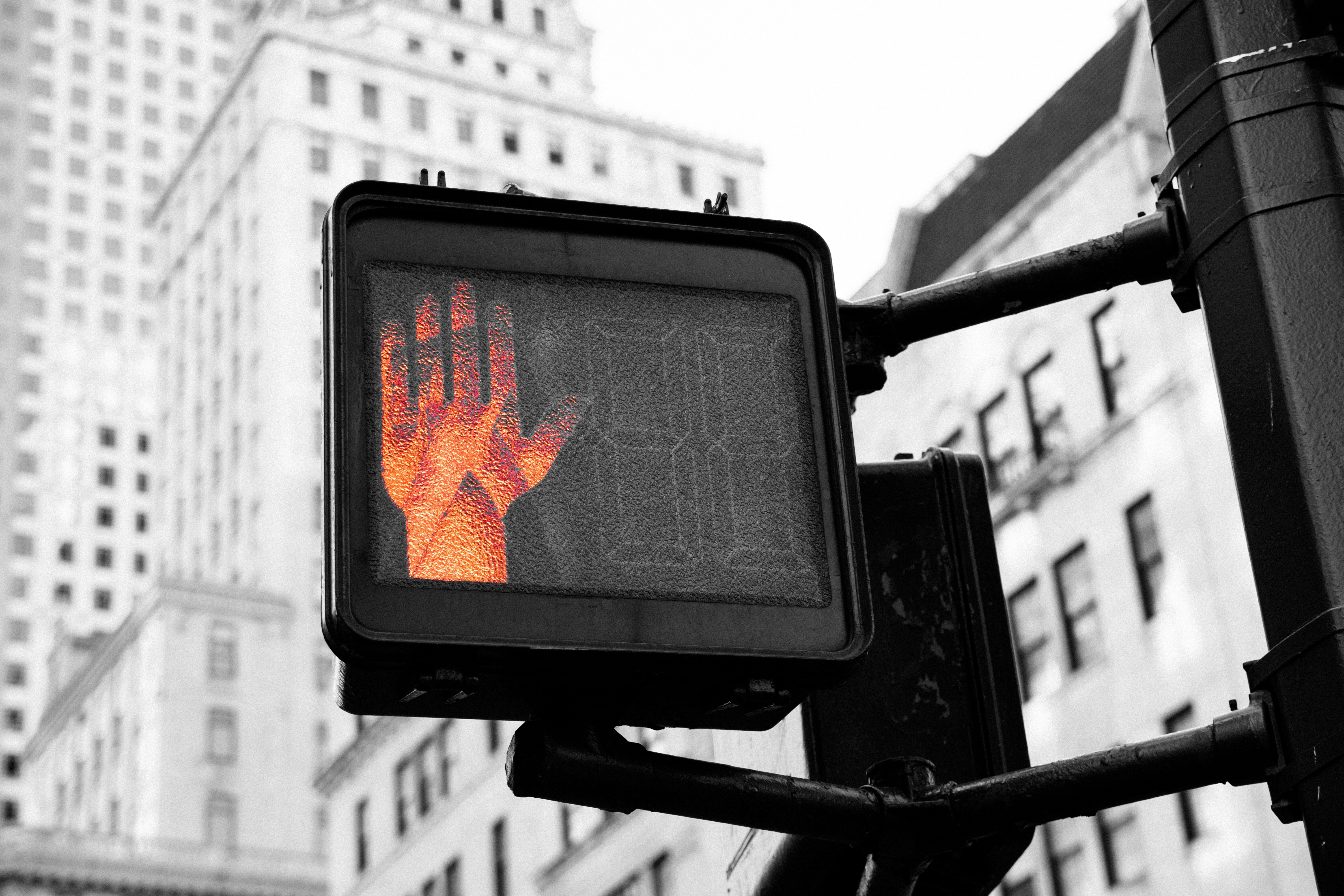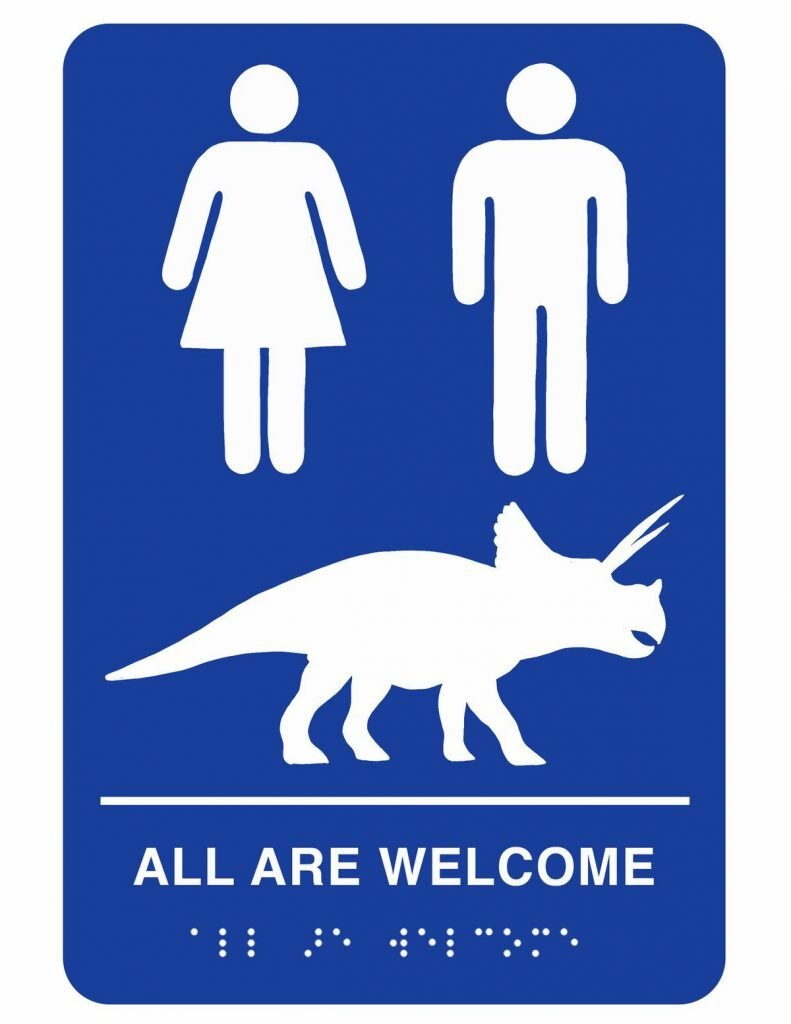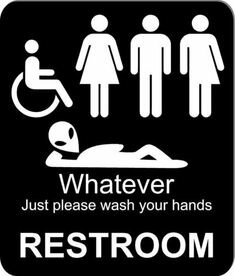Our words have power to create and perpetuate ways of perceiving the world, whether for good or for bad. Transgender folks deal with a lot of complex forms of discrimination, and the language we use can play a big role in either lessening that or promoting it.
Today, many common ways of speaking about trans folks carry discrimination that you might not be aware of. On this page, I break down a variety of those statements and terms—some that are transphobic, and some that are simply outdated or uninformed.
Ultimately, being good to the trans people in your life comes down to listening and having compassion—that’s a better guide than anything I can write here.
But I created this page as a knowledge boost that can help you navigate some common pitfalls when talking about or to folks in the transgender community.
They’re listed in alphabetical order. Here’s a quick overview of what we’ll be covering:
- Born in the wrong body
- Castration
- Hermaphrodite
- Identify as …
- Lifestyle choice
- Listing gender identities with mythical creatures
- Mutilation
- Preferred pronouns
- Sex change
- Tranny
- Transgenders/transgendered
- Transtrender
- Used to be a man/woman
Born in the wrong body
This isn’t offensive, but it’s a generalization that deflects the role our transphobic society plays in the trans experience. It isn’t always accurate and can be misleading.
In the past, it was common for transgender people to use the phrase “born in the wrong body” to explain their identities to cisgender people. (Many still use it.) It’s often an oversimplification of the experience, but it helps a group of people unfamiliar with what gender dysphoria is like to understand the concept.
While it does accurately describe a portion of some transgender folks’ experiences, it’s wrong to assume it applies to all of us.
For many trans folks, their body doesn’t feel wrong—but the way society responds to their body does.
While many trans people feel that their bodies need to change to help them become comfortable with how they represent their gender (I am one of those people), not all do. Many transgender folks don’t experience body dysphoria, and/or are unable to spend thousands of dollars and months of recovery time on body-altering surgeries and therapies. This doesn’t make them any less the gender they claim to be.
Some trans men never undergo surgeries and hormone therapies, and the same goes for trans women. Likewise, nonbinary folks are all over the map on whether they pursue components of medical transition.
This doesn’t mean they were born in the wrong body: they were born in bodies that society has wrongly coded to pertain only to certain genders. That’s what makes “born in the wrong body” such a misnomer when applied broadly to transgender people as a whole. This varies from individual to individual, and doesn’t include everyone—so don’t take this phrase for granted as true about everyone.
Castration
Using the term “castration” to reference any sort of transition procedure is extremely crass. Avoid doing this. This view is contingent on the idea that the person undergoing the procedure has been mutilated, which is a very harmful view. See mutilation later on in the post.
It’s a common scare-tactic of the right wing to use the phrase “chemical castration” to talk about trans women and girls being allowed to transition. If you hear transgender people being spoken of in this way, it’s coming from a bigoted place.
People who undergo medical procedures that help them transition are pursuing healing, not damaging their bodies. It’s important to respect that.
Hermaphrodite
People often use this term to refer to people they perceive as between male and female. It’s a misleading term with a lot of stigma, and it’s best to avoid using it in reference to human beings.
Not only does it have negative and undignified connotations, but the term specifically means that the person in question has both male and female genitalia, which isn’t the definition that is usually intended.
Here are more appropriate terms to use instead:
- In reference to someone who has a combination of male and female sex characteristics, an accurate term is intersex.
- In reference to someone who has a gender identity that isn’t strictly male or female, two accurate terms are nonbinary and genderqueer.
- For a person whose gender seems to be some combination of male and female, you can say they are androgynous.
Identify as a …
I hear a lot of people use the phrase “male identified,” “female identified,” “they identify as a …”
If you were a pianist, you wouldn’t say “I identify as a pianist.” That would sound like you weren’t really a pianist, you just liked to think of yourself that way.
So you’d just say “I’m a pianist.”
The same goes with gender. People’s bodies don’t have to match what our society assumes a gender is limited to in order for them to belong to that gender.
Using the phrase “identify as” is condescending.
Lifestyle choice
A common response to a person who comes out as trans from people who are trying not to be bigoted is something along these lines:
“I still love you and support you, but I can’t agree with this lifestyle choice.”
This is far more of a problematic response than the people who use it realize. It wrongly reduces peoples’ identities to something as shallow as a poor lifestyle choice. This is not only profoundly dismissive, but also hateful, whether or not that’s the intention.
Believing someone would be a better person if they weren’t trans means you believe they should be a different person than they are.
If you believe they should be a different person than they are, you believe the real person they are shouldn’t exist.
If you think someone shouldn’t exist, that’s hate.
Listing gender identities with mythical creatures
This one doesn’t unilaterally bother transgender people, but I find it belittling and counterproductive.
Often gender identities that aren’t strictly male or female are included in a list that starts with male and female and devolves into a list of mythical creatures. You might see it as something like “We include you whether you’re male, female, genderfluid, genderqueer, a mermaid, or an ambassador from planet blorbf!”
This seems to be especially common on gender-inclusive bathroom signs. Here are a few examples of what I mean:
We’re at a point in time where most trans folks are just relieved when there’s a bathroom we can use period—it doesn’t matter what the sign is, we’re just grateful for the chance to pee in peace.
But. However well-meaning the sentiment, it misleadingly conflates very real gender identities with fictional concepts. I find it to be condescending, dehumanizing, and unhelpful. One of our biggest obstacles for being accepted in society is people thinking we’re making things up and that our identities are not real. This type of language and signage doesn’t help.
A true gender-neutral approach to things doesn’t require listing out details of gender until we start getting silly and dismissive.
Even the half-man, half-woman icon demonstrates pretty severe ignorance about nonbinary identities.
Here’s an example of a gender-neutral approach: how about not making something about gender that doesn’t need to be about gender? Like this:
Note: I’m all for being more expressive on signage and having more fun on them if you want. That gender-neutral sign is pretty dry. But I also don’t think the genders of people who are already constantly being scrutinized should be turned into a punchline.
Mutilation
Referring to any sort of medical transition procedure as “mutilation” is deeply hurtful and crass. Avoid doing this.
Again, this is a common scare tactic from uninformed conservatives to malign trans people as though we are sick and doing horrific things to our bodies. The word “irreversable” is often pulled in. They paint us as being in need of severe intervention to try to control us, instead of allowing us to pursue healing and freedom. This is a dangerous and oppressive narrative.
People undergoing medical transition are not being mutilated—these procedures are part of their healing and self-expression. It is deeply transphobic to refer to their transition with terms that in any way evoke the concept of mutilation.
Preferred pronouns
This one’s much like what I said about the phrase “identify as.”
If you had brown eyes, you wouldn’t say “my preferred eye color is brown.” That would make it sound like you were just pretending your eyes were brown because you wished it was true.
You’d say, “my eyes are brown.”
The same goes with pronouns. It’s not about preference, it’s about what’s true. Don’t ask someone about their “preferred” pronouns, just ask them about their pronouns.
If you get someone’s pronouns wrong, it’s not that you’re neglecting someone’s preference—it’s that you’re wrong about a fact.
Sex change
To say that someone “got a sex change” isn’t offensive, but it is an oversimplification that reinforces the false binary sex idea.
To use the phrase is hurtful in some circles, but mostly is just likely to demonstrate ignorance. It wrongly creates the illusion that a switch can just be flipped from one binary sex to another. When in reality, the medical transition process takes a huge variety of procedures and therapies that are different from person to person. And they’re often part of a staggered process that can take years.
This term was used relatively frequently in the past to refer to binary transgender folks who had undergone involved medical transitions. Now that our views on gender are much more nuanced, the term “sex change” is recognized to be quite crude. Usually, these procedures are talked about individually as part of the overarching concept of medical transition.
Tranny
This is a slur. Don’t use it.
Transgenders/transgendered
Both “transgenders” and “transgendered” are misuses of the word “transgender.” Using them isn’t offensive, but it will make you sound ignorant.
Transgender is an adjective. Instead of saying “transgenders,” say “transgender people.” Instead of saying “he is transgendered,” say, “he is transgender.”
Also, bonus: just avoid using the word “transgenderism.” Being trans is not a disease.
Transtrender
This word is, simply put, a slur. Avoid using it (unless acknowledging it as a slur). It’s a play on the words “transgender” and “trend.” It refers to a person who is pretending to be transgender for attention—a harmful concept to the transgender community. The term was created by a group of people known as truscum to sow seeds of doubt about whether a person can be trusted to know their gender—especially if they are nonbinary or don’t have medically-diagnosable gender dysphoria.
Used to be a man/woman
It’s not uncommon to hear someone describe a transgender person by saying “she used to be a man” or “he used to be a woman.”
That’s a misunderstanding. When a person is transgender, they aren’t changing into a different gender; they are coming into their own.* A transgender man was always male—chances are people just thought he was a woman based on his body parts. I’ve always been agender—I only ever pretended to be a woman. I never actually was one.
Instead, before describing how someone used to present themselves in the past, ask them how they prefer you to talk about it, or if they’re even OK with you talking about it at all. Many trans folks view this as a very intimate and personal part of their lives, so you can honor that by recognizing it deserves to be treated with discretion.
*Note: there are nonbinary gender identities like genderfluid and polygender in which people experience shifts and changes in gender. This doesn’t mean those people are confused about their gender; it means that part of the nature of their gender is that it changes.
I’ll keep this page updated
The cool thing about being human is that we are constantly evolving our understandings of the world. This means it will probably become clear that there are more words and phrases that are unhelpful or even harmful. Even though I’m a member of the transgender community, I’m still learning. I plan to keep adding to this page as I uncover more things.
Related pages to check out





Hey Adrian, Please forgive me in my extreme ignorance. I am very thankful for your the blogs, that I have read. (I haven’t read very many yet.) I want you to know that from my perspective however, it is a lot of information to remember and that I do the best I can to be respectful. For me it’s like something you live with and think about all the time and I am just now being exposed to. I am concerned about treating all people with love and respect however so I just wanted to express my thankfulness for you being willing to print this publicly so I have a chance to understand. You are brave and heroic for standing in the gap between those without such talents as to be able to express themselves so clearly and those of us that are uneducated. I may have in the past ignorantly said that I don’t care what gender you are because you are a human person that needs to be loved and my intention would not have been to not care. This and so much more that you have brought up has caused me to just want to say forgive me…